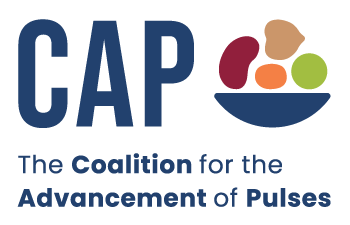| |
The Coalition for Advancement of Pulses (CAP) is an initiative led by the American Pulse Association (APA) with support from the USA Dry Pea and Lentil Council (USADPLC), the Pulse Foundation, the U.S. Dry Bean Council (USDBC), and the U.S. Pea and Lentil Trade Association and represents a collective of pulse crop growers, processors, manufacturers, and related organizations. The Coalition for the Advancement of Pulses is committed to increasing the consumption of pulses in the United States by increasing research on the nutritional benefits of pulses and growing awareness about the many health benefits of pulses. For more information, please contact This email address is being protected from spambots. You need JavaScript enabled to view it..
|
|





